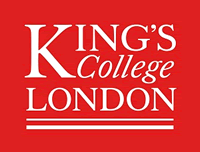About the Project
Cancer is a devastating disease: more than one in three people in the UK will develop cancer in their lifetime. Metastasis is the primary cause of cancer related deaths. Crucially, any potential treatment of metastasis, which may target increased migration, needs to take into account that cancer cell migration is plastic, i.e. that cancer cells can easily switch between a Rac-Scar/WAVE-Arp2/3 actin polymerisation-driven mesenchymal and RhoA contractility driven amoeboid migration mode. The latter mode can be induced by confining cells. However, it is not known how cancer cells can actively switch between these two modes.
Rac-Scar/WAVE promotes mesenchymal migration and its inhibition increases RhoA-ROCK-MyosinII-dependent amoeboid migration. Amoeboid migration is favoured by some cancers including melanomas, while mesenchymal migration is utilised by some other cancers.
In this project, which will start in October 2021 you will investigate a novel mechanosensor that may act as a physiological switch between mesenchymal and amoeboid 3D cancer cell migration using biochemistry, molecular biology, and advanced live cell imaging.
We have unpublished data showing that a novel Rac effector inhibits mesenchymal migration and also increases RhoA activity through a novel mechanism. You will map and mutate the respective binding sites and will use CRISPR-Cas9 to genome edit cancer cell lines and compare them with re-expression of wild-type or mutated cDNA in 3D video-microscopy assays and establish MATLAB code to analyse the extent of amoeboid or mesenchymal migration. You will also produce microchannels for microfluidics experiments to investigate its role in controlling migration in confinement using above cell lines. Furthermore, you will use AFM to analyse changes in stiffness in these CRISPR cell lines.
This novel regulator may also act as a mechanosensor since it translocates to the nucleus at the scratch wound edge of an epithelial sheet. It may function in the nucleus by changing the gene expression of cell migration regulators. You will perform RNAseq gene expression analysis comparing CRISPR knockout and re-expression of nuclear-export and -import mutants.
Taken together, your PhD work will unravel a novel and general mechanism of the control of switching between amoeboid and mesenchymal cell migration modes and how it contributes to cancer progression.
You will join a friendly, interactive, science driven lab, which is embedded in the Cytoskeleton and Cell Motility Section of the Randall Centre at King’s College London: with 9 laboratories all interested in the cytoskeleton and cell motility with joint meetings and journal clubs. Furthermore, we are part of the London wide London Cell Motility Club, which I am organizing.
This project will be co-supervised by Prof Sanz-Moreno (Barts Cancer Institute, Queen Mary University of London) and done in collaboration with Prof Charras (UCL).
Funding notes:
Funding for entry in October 2021: Only self-funded students are eligible:
Candidates must possess or be expected to achieve a 1st or upper 2nd class degree in a relevant subject of the biosciences.
All applicants should indicate in their applications how they intend to fund their studies. We prefer candidates that have secured or wish to secure their own competitive funding from overseas government agencies
If you are interested in this PhD project, please e-mail me using the "e-mail institution form" below with your CV and transcripts and indicate how you plan to fund your studies (self or which scholarship you plan to apply for or have already applied to).
References
(1) Sanz-Moreno V, Gadea G, Ahn J, Paterson H, Marra P, Pinner S, Sahai E, Marshall CJ. Rac activation and inactivation control plasticity of tumor cell movement. Cell. 2008 Oct 31;135(3):510-23. doi: 10.1016/j.cell.2008.09.043.
(2) Krause, M. and Gautreau, A. (2014) Steering cell migration: lamellipodium dynamics and the regulation of directional persistence. Nature Reviews Molecular Cell Biology, 15, 577-90 (2014).
(3) Law, A.-L., Jalal, S., Mosis, M., Pallett, T., Guni, A., Brayford, S., Yolland, L., Marcotti, S., Levitt. J.A., Poland, S.P., Rowe-Sampson, M., Jandke, A., Köchl, R., Pula, G., Ameer-Beg, S.M., Stramer, B.M., and Krause, M. (2020) Nance-Horan Syndrome-like 1 protein negatively regulates Scar/WAVE-Arp2/3 activity and inhibits lamellipodia stability and cell migration. https://www.biorxiv.org/content/10.1101/2020.05.11.083030v1
(4) Charras G, Sahai E. Physical influences of the extracellular environment on cell migration. Nat Rev Mol Cell Biol. 2014 Dec;15(12):813-24. doi: 10.1038/nrm3897. Epub 2014 Oct 30
(5) Georgouli M, Herraiz C, Crosas-Molist E, Fanshawe B, Maiques O, Perdrix A, Pandya P, Rodriguez-Hernandez I, Ilieva KM, Cantelli G, Karagiannis P, Mele S, Lam H, Josephs DH, Matias-Guiu X, Marti RM, Nestle FO, Orgaz JL, Malanchi I, Fruhwirth GO, Karagiannis SN, Sanz-Moreno V. Regional Activation of Myosin II in Cancer Cells Drives Tumor Progression via a Secretory Cross-Talk with the Immune Microenvironment. Cell. 2019 Feb 7;176(4):757-774.e23. doi: 10.1016/j.cell.2018.12.038. Epub 2019 Jan 31.
(6) Carmona G, Perera U, Gillett C, Naba A, Law AL, Sharma VP, Wang J, Wyckoff J, Balsamo M, Mosis F, De Piano M, Monypenny J, Woodman N, McConnell RE, Mouneimne G, Van Hemelrijck M, Cao Y, Condeelis J, Hynes RO, Gertler FB, Krause M. (2016) Lamellipodin promotes invasive 3D cancer cell migration via regulated interactions with Ena/VASP and SCAR/WAVE. Oncogene. 2016 Sep 29;35(39):5155-69.
(7) Law, A., Vehlow, A., Kotini, M., Dodgson, L., Soong, D., Theveneau, E., Bodo, C., Taylor, E., Navarro, C., Perera, U., Michael, M., Dunn, G.A., Bennett, D., Mayor, R., and Krause M. (2013) Lamellipodin and the Scar/WAVE complex cooperate to regulate cell migration in vivo. Journal of Cell Biology, 203(4), 673-689.

 Continue with Facebook
Continue with Facebook



